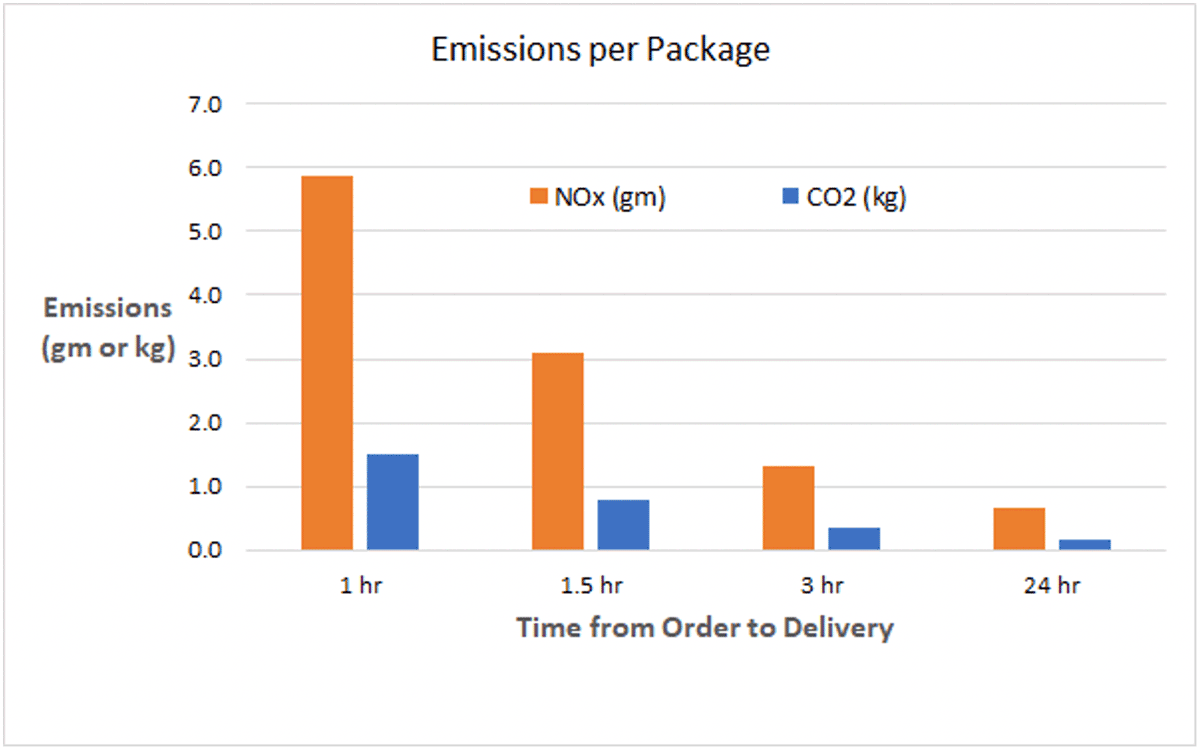
UC Davis Transportation and Climate Blog: Keeping e-Commerce Environmentally Friendly—What Consumers Can Do
By Miguel Jaller, Anmol Pahwa, Seth Karten
With more states and individuals observing stricter limits on in-person shopping, and with holidays coming, what can we do to limit the environmental and societal impact of online shopping? And even beyond this moment, how do we minimize the harm—or maximize the benefit—of online shopping to society and life on our planet?
The short answer: Buy what we need, and do what we can to allow packages to be consolidated for the most efficient delivery routes, so the fewest miles possible are traveled for each package brought to the door.
Theoretically, e-commerce—the buying and selling of goods and services using the internet—should be an environmentally friendly alternative to shopping in a store. A full delivery van driving an optimized route to deliver 50 packages contributes far less pollution and traffic congestion than 50 people driving their personal cars to the store and back. However, consumers tend to buy one item at a time when shopping online but bundle several items on a shopping trip. Plus, online shopping becomes less environmentally friendly as retailers offer perks such as free returns and expedited shipping, to attract shoppers and gain market share.
Our research examines how different types of e-commerce transactions affect local air pollutant emissions, carbon dioxide emissions, and vehicle miles traveled—as well as traffic congestion.
We found that expedited delivery times were among the most important determinants in worsening emissions and increasing the number of vehicle miles traveled. As delivery times get shorter (e.g., 2-days to 1-day to 1-hour), the environmental and societal costs dramatically increase, as the figures here show.


Figure: As the time from order to delivery lengthens, the emissions (top) and vehicle miles traveled (bottom) for each package decrease. (NOx, nitrogen oxides; CO2, carbon dioxide)
To meet shorter delivery times, delivery vehicles operate at reduced capacity (i.e., depart before they can be completely filled). We calculated that a vehicle with a one-day time window can make 120-300 deliveries, while a vehicle constrained by a one-hour time window can only make about 10-15 deliveries, depending on the characteristics of the geographic location.
So what does this mean for us as consumers? Factors that increase the number of items per vehicle mile of travel in a delivery or shopping trip will reduce the pollution and traffic impacts of our purchases. We should consider the following actions, when possible, to reduce the environmental impact of our online purchases:
- Allow longer time windows for delivery whenever possible, even if we do not save out-of-pocket expenses for it.
- Group orders together as much as possible by pooling orders into a single delivery and do not impose additional constraints on the delivery, such as specific days and times.
- Minimize returns and consider buying clothing, shoes, and electronics in-person, as these have high rates of return from online shopping (clothing/shoes 56%, electronics 42%).
- Avoid driving to the store to decide on—but not purchase—an item, and then ordering it online to save money, thereby increasing the miles traveled for one purchase.
- For recurring purchases, take advantage of subscriptions, which can save money and allow the vendor to optimize planning and delivery.
- Select, when possible, an alternative delivery location (e.g., pickup facility, lockers) at a place that you are already going to travel to, preferably by walking or biking.
Besides consumers, governments, including local planning and permitting agencies, and other businesses, including e-commerce and delivery companies, affect how e-commerce impacts society, the environment, and climate. In an earlier blog post, we considered the impact of these many government and business entities on the shifting locations of warehouses and distribution centers, and the resulting impact on pollution and congestion in disadvantaged communities. In future blogs we will consider other ways agencies and companies can help reduce emissions and vehicle miles traveled.
For more information, please see our journal article comparing e-commerce to in-store shopping and our in-depth report on the research tools and findings regarding determinants of e-commerce externalities.
Miguel Jaller is Co-Director of the Sustainable Freight Research Center at ITS-Davis. He studies freight transportation, sustainable transportation systems, and humanitarian logistics.
Anmol Pahwa is a Ph.D. candidate in the Civil and Environmental Engineering Department at UC Davis. His blog is at https://the-world-of-transportation-science.blog/.
Seth Karten is the Science Writer at ITS-Davis.
